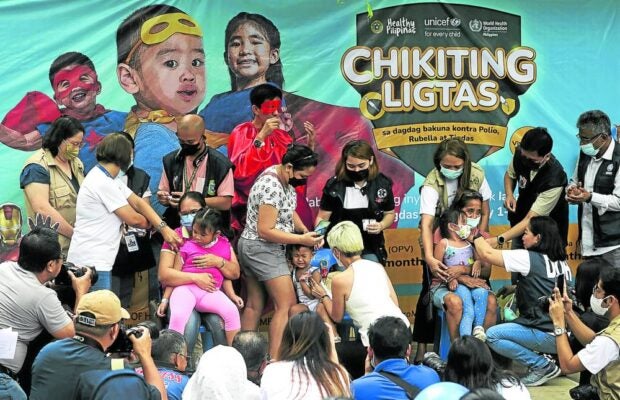MANILA (ANN/PHILIPPINE DAILY ENQUIRER) – The Philippines is currently grappling with a sharp rise in measles and rubella cases, experiencing a staggering 269-per cent increase in infections, even amidst a government-led immunisation campaign targeting children against vaccine-preventable diseases.
According to the latest surveillance report from the Department of Health (DOH), there have been 1,823 reported cases of measles and rubella between January 1 and October 7, a significant surge from the 494 cases documented during the same period last year.
Out of these, 1,731 cases were measles infections, and 92 were rubella. Alarmingly, all 17 regions in the country have reported a surge in cases, with the Bangsamoro Autonomous Region in Muslim Mindanao (BARMM) witnessing the highest increase, reporting 532 cases – a staggering 3,992-percent rise from the 13 cases reported in 2022.
BARMM is composed of the provinces of Basilan, Lanao del Sur, Maguindanao del Norte, Maguindanao del Sur, Sulu and Tawi-Tawi.

This was followed by the increases in Cordillera Administrative Region (Abra, Apayao, Benguet, Ifugao, Kalinga and Mountain Province) with 950 per cent; Soccsksargen (South Cotabato, Cotabato, Sultan Kudarat, Sarangani and General Santos City) with 608 per cent; Central Luzon (Aurora, Bataan, Bulacan, Nueva Ecija, Pampanga, Tarlac and Zambales) with 538 per cent; and Caraga (Agusan del Norte, Agusan del Sur, Surigao del Norte, Surigao del Sur and Dinagat Islands) with 305 per cent; and Western Visayas (Aklan, Antique, Capiz, Guimaras, Iloilo and Negros Occidental) with 225 per cent.
Five deaths
Fatalities due to measles also rose to a total of five this year.
They were from the regions of Calabarzon (Cavite, Laguna, Batangas, Rizal and Quezon); Mimaropa (Mindoro, Marinduque, Romblon and Palawan); Davao (Davao de Oro, Davao del Norte, Davao del Sur, Davao Oriental and Davao Occidental); and BARMM.
This puts the case fatality rate of measles at 0.3 per cent. There were no reported deaths due to the viral disease last year.
Measles, which in Filipino is called “tigdas,” and rubella are two of the most common vaccine-preventable diseases among school-age children in the Philippines.
Also known as German measles, rubella is caused by a different virus than measles. Both are contagious and are transmitted when an infected individual coughs or sneezes. Measles are known to be potentially deadly.
Based on the description of the Department of Science and Technology’s Philippine Council for Health Research and Development, the common symptoms are fever, cough, runny nose, red eyes and sore throat.
Under the “Chikiting Ligtas” immunisation program, the DOH was able to vaccinate around 84 percent of children against measles and rubella from May 2 to June 14, right in the middle of the time period surveyed.
The effort was made to curb the threat of a measles outbreak among kids under 5 years old, considered the most susceptible to the disease.




